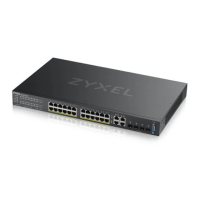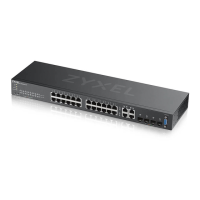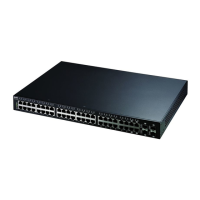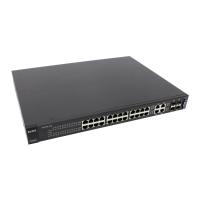GS2220 Series User’s Guide
197
Fig ure 156 Advanced Application > Port Authentication > 802.1x
The following table describes the labels in this screen.
Table 81 Advanced Application > Port Authentication > 802.1x
LABEL DESC RIPTIO N
Active Select this check box to permit 802.1x authentication on the Switch.
Note: You must first enable 802.1x authentication on the Switch before configuring it
on each port.
EAPOL flood Select this check box to flood EAPOL packets to all ports in the same VLAN.
EAP over LAN (EAPOL) is a port authentication protocol used in IEEE 802.1x. It is used to
encapsulate and transmit EAP packets between the supplicant (a client device that requests
access to the network resources or services) and authenticator (the Switch) directly over the
LAN.
Note: EAPO L flo o d will not take effect when 802.1x authentication is enabled.
Port This field displays the port number. * means all ports.
* Settings in this row apply to all ports.
Use this row only if you want to make some settings the same for all ports. Use this row first to set
the common settings and then make adjustments on a port-by-port basis.
Note: Changes in this row are copied to all the ports as soon as you make them.
Active Select this to permit 802.1x authentication on this port. You must first allow 802.1x
authentication on the Switch before configuring it on each port.
Max-Req Specify the number of times the Switch tries to authenticate clients before sending
unresponsive ports to the Guest VLAN.
This is set to 2 by default. That is, the Switch attempts to authenticate a client twice. If the client
does not respond to the first authentication request, the Switch tries again. If the client still does
not respond to the second request, the Switch sends the client to the Guest VLAN. The client
needs to send a new request to be authenticated by the Switch again.
Reauth Specify if a subscriber has to periodically re-enter his or her user name and password to stay
connected to the port.
Reauth-period
secs
Specify the length of time required to pass before a client has to re-enter his or her user name
and password to stay connected to the port.

